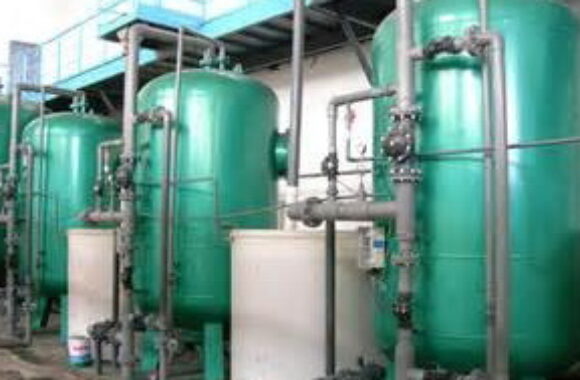Ion Exchange (IX) resin columns and Cation Columns
Ion Exchange (IX) resin columns and Cation Columns
Ion Exchange (IX) resin columns and Cation Columns are commonly used in water treatment processes to address water hardness issues caused by certain divalent and trivalent cations such as calcium, magnesium, iron, manganese, and aluminum. However, the presence of calcium and magnesium cations is primarily responsible for water hardness, as their concentrations are significantly higher compared to other cations. In industrial applications, particularly in heat exchangers and other thermal installations, water hardness can be problematic. It can lead to scale deposition and fouling in these systems, which can cause operational issues. Therefore, the use of ion exchange resin columns, specifically cation columns, can help mitigate water hardness problems by selectively removing calcium and magnesium ions. These columns act as a medium for exchanging the hardness-causing cations with less troublesome ions, effectively reducing the overall water hardness.
:From an industrial perspective, water hardness is classified into four groups based on its level
Group 1: Waters with a hardness level below 50 mg/l as calcium carbonate, known as soft water.
Group 2: Waters with a hardness level between 50 and 150 milligrams per liter as calcium carbonate, are considered moderately hard water.
Group 3: Waters with a hardness level between 150 and 300 milligrams per liter as calcium carbonate, categorized as hard water.
Group 4: Waters with a hardness level exceeding 300 milligrams per liter as calcium carbonate, referred to as very hard water.
To remove hardness from water, water softeners are commonly used. A typical water softener device consists of a metal or fiberglass (FRP) cylinder that contains a resin material for water softening (ion exchange resins). These resins can exchange magnesium and calcium ions with sodium ions, effectively converting hard water into soft water. The ion exchange process occurs within the water, where the ions present in the liquid phase move towards the solid bed or ion exchange resin. As water is a combination of ions in an electrically balanced state, other ions are transferred from the solid phase into the water or wastewater, replacing the removed ions from the water. These resins are typically composed of polymer-based materials such as polystyrene, phenol-formaldehyde resins, or epoxy resins, with functional groups such as sulfonic, carboxylic, or amino groups attached to them. In nature, zeolites are known as natural sources for performing this process. Generally, if the total dissolved solids (TDS) in water exceed 2000 mg/liter, ion exchange may not be an effective method for reducing the salt content.
The resin used in water softener devices is typically cationic resin, which becomes saturated and loses its effectiveness after a certain time. However, if the resin is washed with a 10% sodium chloride solution, it regains its water-softening properties. Lower or higher salt concentrations have less effect. The use of turbid or suspended water, as well as water containing iron, manganese, copper, and other heavy metals, can wear out the resin and reduce the efficiency of the water softener. It is recommended to pre-filter the water to remove suspended solids using a sand filter. Measures should also be taken to reduce heavy metal salts. The startup, operation, and regeneration of resin-based water softener devices can be done manually or automatically using manual valves or automatic valves. Water softening and conditioning are commonly used for steam boilers, reducing or eliminating hardness in heating and cooling systems, pre-treatment of water before UF, NF, and RO units, and reducing hardness in drinking water. According to the WHO (World Health Organization) standard, the recommended hardness level in drinking water, expressed as CaCO3, is 250 milligrams per liter. Water softening is also employed to meet the industrial water requirements of power plants, chemical industries, textile industries, dyeing, and other applications.

